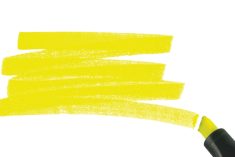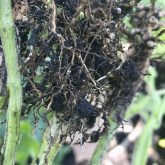The battle with weeds just never seems to end, and now, as if resistant weeds, dandelions or Eastern black nightshade don’t provide enough challenges, there’s some concern that tufted vetch will be a growing issue for an increasing number of farmers.
To be fair, Canada fleabane, giant ragweed and common ragweed are still the “Big Three” when it comes to problem weeds in Ontario, mostly by virtue of their resistance to glyphosate. But tufted vetch (as opposed to the hairy vetch varieties grown as a forage) has captured the attention of farmers and researchers.
Read Also

Sensing the soil: Root cell research finds ‘stress hormone’
Research into how root cells react to soil stressors could help plants better adapt to changes in their climate.
Anecdotal reports out of Lambton County refer to the binding action the weed can exert on harvesting equipment, and research by François Tardif at the University of Guelph indicates glyphosate is no longer effective in controlling vetch.
At 1.0 and 2.0 l/ac. (the typical rates for Roundup Ready soybeans) glyphosate only provided 57 and 72 per cent control, respectively. Although 3.0 l/ac. provided 85 per cent control and 4.0 l/ac. provided 98 per cent, neither rate is registered for use in Roundup Ready soybeans.
“Vetch as a weed has been around for decades,” says Darren Robinson, associate professor and horticultural weed specialist with the University of Guelph’s Ridgetown Campus. He recalls learning about tufted vetch while a student in Clarence Swanton’s classes.
“I do think growers are finding it more and more in fields, associated with no till and having winter cereals in the rotation,” Robinson says. “It’s building up, but I don’t think glyphosate resistance is the problem, I think it’s more that it’s a perennial weed that produces seeds that can remain viable for years, and it has that horizontal root system. It can become really persistent, especially in no-till situations.”
- From the Grainews website: Controlling downy brome
What makes it difficult?
Known as a “creeping” perennial, vetch can reproduce not only from seeds but from the horizontal root buds. It’s also tolerant to a variety of herbicides or unaffected by others including thifensulfuron methyl/tribenuron methyl (Refine Extra) and bromoxynil/MCPA (Buctril M). The weed also emerges late, usually after the window for effective herbicide applications.
As Robinson notes, vetch can often be found in soybeans or corn, but it seems to have found its niche in winter wheat.
“Part of it has to do with the timing of when you can apply certain herbicides in winter wheat,” says Robinson, adding that using a fall-applied herbicide is a logical idea. The problem is finding the right herbicide; there aren’t active ingredients that can be safely applied in the fall that give commercially acceptable control of vetch. With that in mind, Robinson says he has seen better control from fluroxypyr plus MCPA (Trophy).
“I know Peter Sikkema has looked at it, and optimally, you want to time your applications for plants that are at the two- to four-leaf stage,” says Robinson. “I don’t think it’s possible in all situations with vetch because of when you can actually apply Trophy. But definitely it’s very good, and it will give you commercially acceptable control. So with winter wheat, it has to be at the three-tiller stage. And we’re talking about 90 per cent control.”
In soybeans, Robinson has seen research that indicates S-metoloachlor (and R-enantiomer) and metribuzin (Boundary) would be the best pre-emerge for IP soybeans. But that would also require a followup with fomesafen (Reflex) and thifensulfuron methyl (Pinnacle). In corn, he says, dicamba, and mesiotrone (Callisto) are good options. Robinson adds that he hasn’t heard of the same issues with vetch in corn as in winter wheat, and he believes that may have something to do with tillage practices employed in corn.
As for yield losses, again, the research isn’t extensive. Robinson has seen figures that cite yield reductions of 60 to 70 per cent, but those are in mixed weed populations with vetch as one of the species. He says he wouldn’t be surprised to see yield losses of between 30 and 40 per cent.
“But it’s not just yield losses,” says Robinson. “I know it can really cause problems with running equipment through the field. It’s not bindweed but it can really bind around equipment.”

















